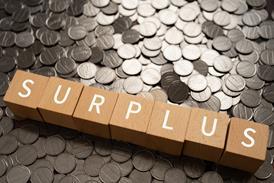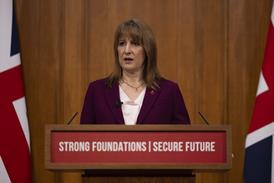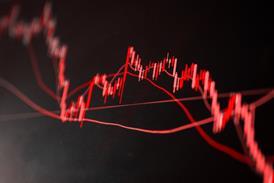Defence and aerospace investments have been excised from many portfolios in recent years over concerns that they cannot satisfy schemes’ environmental, social and governance (ESG) policies.
Yet increasing numbers of asset owners and managers are increasing their exposure to these sectors, according to Hortense Bioy, head of sustainable investing at Morningstar.
Speaking at the Pensions UK Annual Conference this week, Bioy said a resurgence of geopolitical tensions since the beginning of the war in Ukraine in 2022 has prompted more than 100 countries to increase their military budgets. These defence reviews are strengthening the sector but also positioning defence as an engine of growth.
“In European equity funds, exposure to aerospace and defence has tripled since 2022, and exposure has doubled since the beginning of this year.”
Hortense Bioy, Morningstar
“In European equity funds, exposure to aerospace and defence has tripled since 2022, and exposure has doubled since the beginning of this year,” said Bioy, “with increased exposure explained by the great performance of a lot of those stocks.”
Performance has been significant, with Morningstar’s Space and Defense Index showing gains of 250% since 2022, compared to only 78% for the US equivalent and 26% for the European version.
Asset managers are increasing their exposure to these companies, even within ESG mandates. More than half of European equity funds graded as article 8 under the EU’s ESG rating system have exposure to defence, compared to one third three years ago, said Bioy.
In addition, 20 new defence-themed funds have been launched this year, compared with five in 2024. The largest defence fund in Europe – an exchange-traded fund – now has almost $7bn (£5.2bn) in assets.
Though their exposure remains below the average of non-ESG funds, even ESG funds have increased their exposure to defence stocks since 2022. Even the ‘darker green’ article 9 funds have not reduced their exposure since 2024.
Emerging risks to consider in defence investing

Bioy said that analysts see opportunities for strong financial returns, as growth in defence spending is expected to reach almost 7% annually. But in addition to existing ESG risks – corruption, product quality and safety, and carbon footprint – there are some emerging risks, she warned.
“One is related to artificial intelligence, [related to] accountability, especially when machines influence very critical decisions, such as deploying machines that are used to kill people,” said Bioy.
The other relates to critical materials, as Europe is very dependent on China for materials. This is compounded by export restrictions and the impact of US tariffs on steel and aluminium.
“It means Europe will need to be resilient and think more in terms of circularity and use recycled materials to make sure that they have the material they need to build products,” Bioy said.
Not all defence companies manufacture military hardware, she added, with many providing different products and services.
“Investors really want to be super selective,” said Bioy. “Depending on the risks, the opportunities, and the sectors, they will pick and choose the companies that they think will profit from this trend of increasing defence spending.”






















